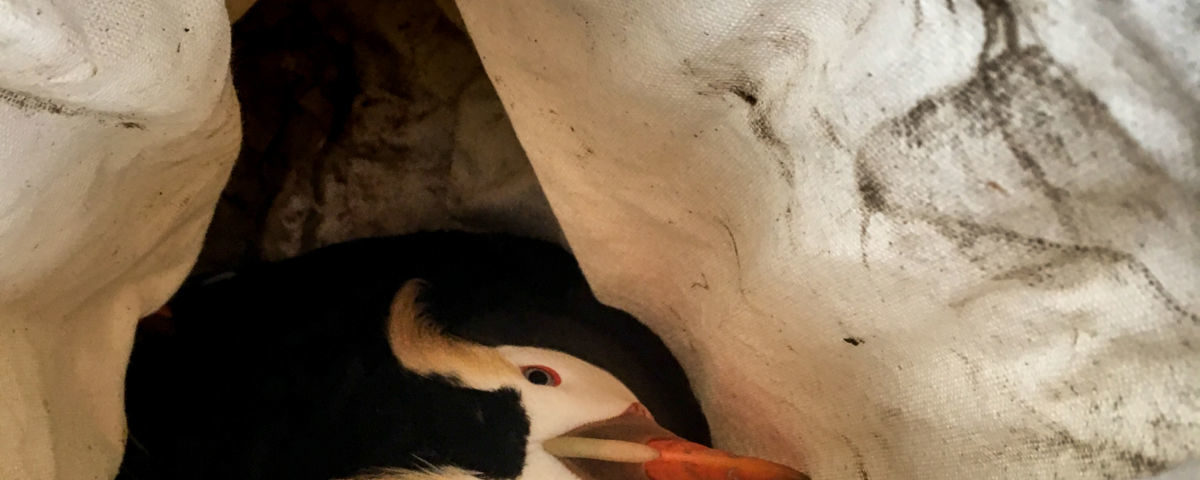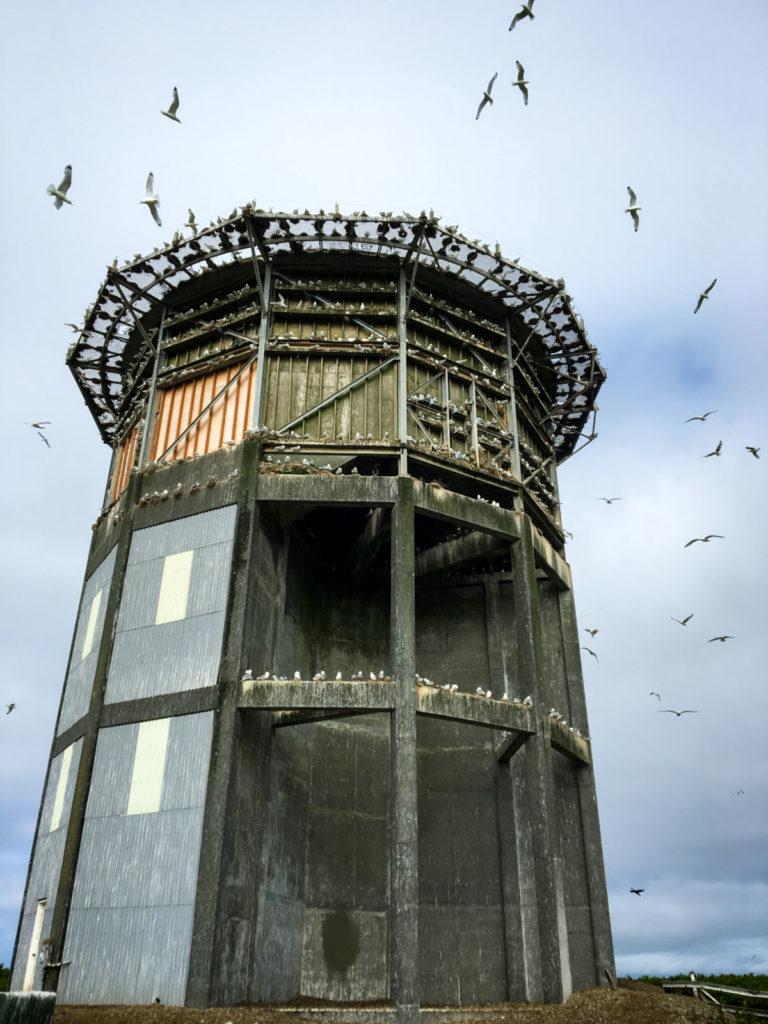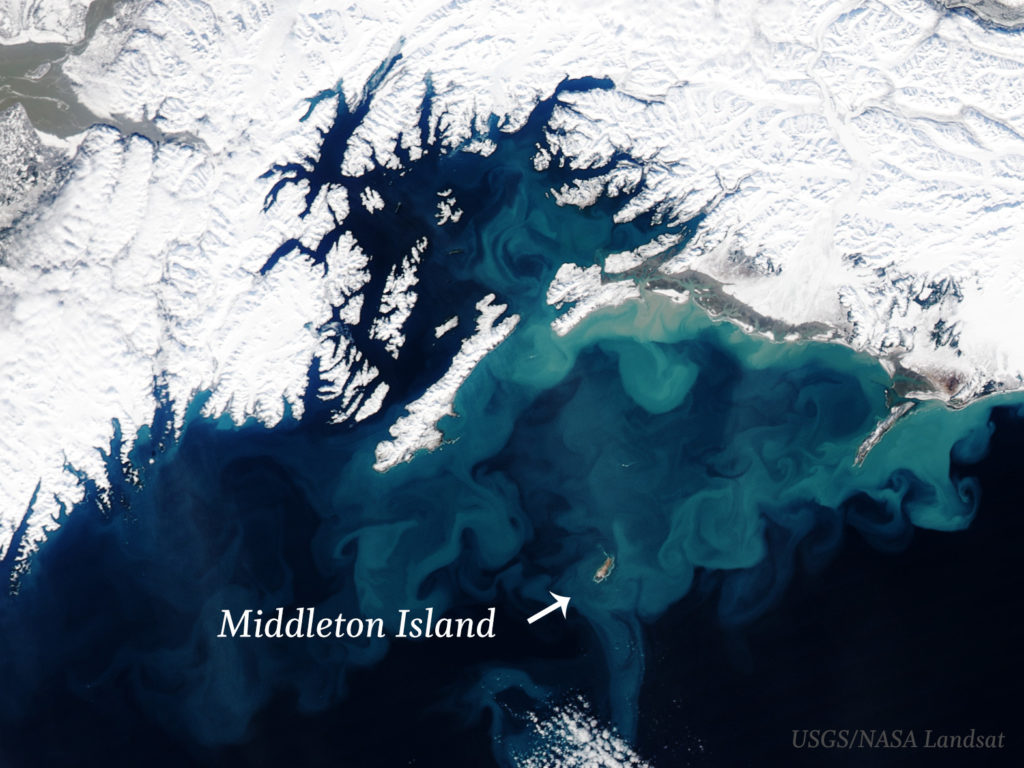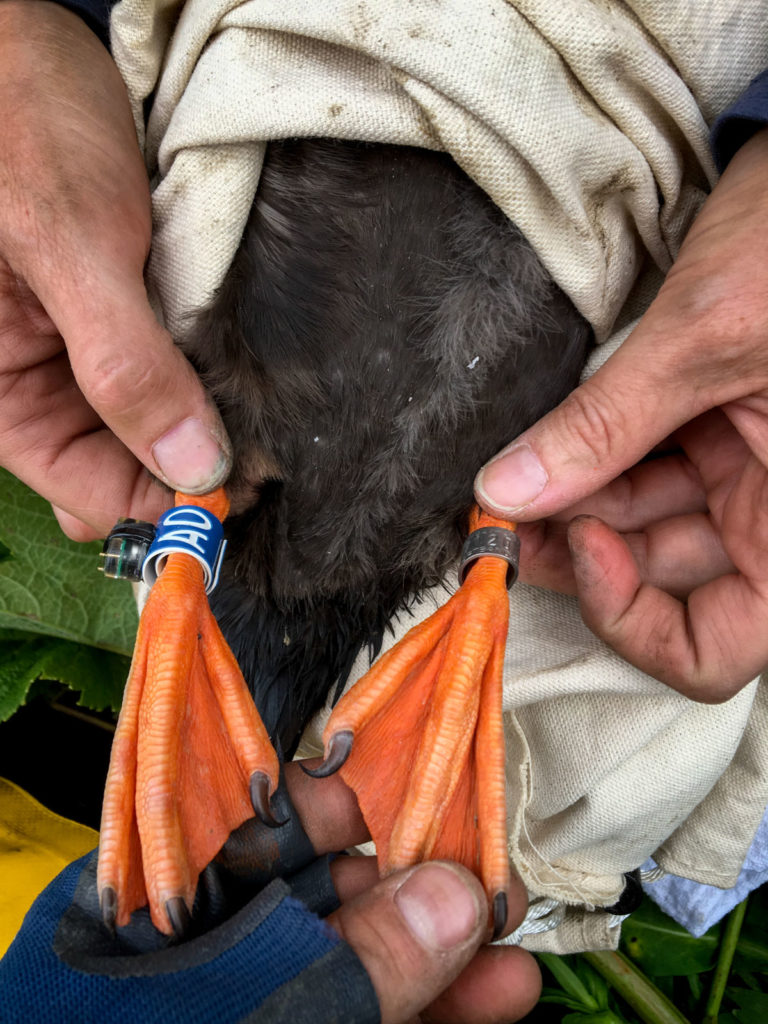2018 Tufted Puffin Field Work Photo Highlights

Prince William Sound Science Center researchers Dr. Kristen Gorman and Anne Schaefer spent two weeks at the end of July and beginning of August on Middleton Island completing the first of three field seasons for their Tufted Puffin project funded by the North Pacific Research Board. These photo highlights detail the research methods used on this trip.
Words by Kristen Gorman
Photos by Anne Schaefer
We are working on the Tufted Puffin project at Middleton Island. It is a really interesting area because it sits out in the middle of the Gulf of Alaska right at the edge of the continental shelf. There are many seabirds that nest on Middleton that have been the focus of long-term studies by groups of researchers. Logistically, working at Middleton was excellent because there was already infrastructure for us to eat and sleep, and there are large numbers of puffins nesting there.

An abandoned radio tower covered with breeding Black-Legged Kittiwakes provides a unique platform for studying seabirds. Photo by Anne Schaefer.
The puffin colony on Middleton Island had thousands of birds nesting there, which is really important because of the way we deployed the geolocator tags. We deployed tags during the middle of the chick-rearing period. During this time of breeding, both parents are often out at sea finding food for their chicks. We could only catch the adult birds when they were still in the burrow after they had fed their chick, so we needed lots of burrow options simply to find enough adults during these brief windows. We were on Middleton for about two weeks and managed to catch 35 adults over that entire time period. It takes a long time to find adults in the burrows, so having lots of birds around increased our chances of being able to deploy geolocator tags on nesting adults.
We worked at the southern tip of Middleton Island. We walked out about 2 km every day in super thick vegetation to reach the puffin colony. Where the puffins nest, there is a hillside named Gold Hill, and many of the burrows are located immediately at the top because the adults like to launch off the hill to fly.
We had two different strategies for finding adults. At first, we were mainly concerned with locating active burrows, i.e., those with chicks, so we could go back and check to see if an adult was attending. We spent a lot of time finding burrows with chicks and then drawing maps on where the burrow was located and what it looked like inside. The puffin burrows are really unique. Some of them go straight back, some of them go off to the side, and some of them have little hidden networks with multiple chambers. The chicks can be in any one of these areas.
The way you can tell if a burrow is active is if there is bird poop at the entrance. The parent puffins come back to the burrow and they will land, often with fish in their mouth, so sometimes you will also see little fish that they dropped there by accident.
Once we knew the locations of active burrows, we used one-way traps placed in the entrances to try to catch the adults. The trap was a PVC tube that fits in the front of the burrow with a swing door, so the adults can go in, but can’t get out. The burrow traps helped save us some time, and in the latter half of the field season we caught most of the adults using this method.
If we found an adult in a burrow, we would reach in and retrieve the bird from the burrow. We would place the adult puffin in a heavy-duty canvas bag right away. The bags helped us control the bird, in addition to keeping them safe and calm. Puffins have very strong bills and can bite anyone handling them.
We had a pop-up tent in which we processed the birds. Immediately after capture we would walk back to the tent and start by weighing the bird in the bag. We then measured the bill length, bill depth, and other parts of the head for structural size measurements, in addition to the wing and tarsus (leg).
Once we collected all the body size measurements, we took a blood sample from the tarsus vein for determining the sex of the bird (whether its male or female) and for stable isotope measurements. Then we banded the puffin. We placed a regular USGS metal band on one leg and on the other leg we would place a plastic band outfitted with a geolocator. We then took a feather sample before returning the adult back to the burrow to be reunited with their chick.
There were a few instances when we thought we spotted geolocator birds flying around, so there was some suggestion the birds that were handled were back to the task of rearing their chick. We will go back next summer while the birds are incubating their eggs and try to find these adults in their burrows again (puffins usually use the same burrow for multiple years). At that time of the breeding season, the parents spend more time in the burrow incubating their egg so they should be easier to catch. We will deploy new geolocator tags on different adult puffins later during the chick rearing stage next year.
We thank Dr. Scott Hatch and the Institute for Seabird Research & Conservation for logistical support, particularly in allowing us to use their base camp while conducting fieldwork at Middleton.
Recommended Reading
Resolving the Annual Distribution of Tufted Puffins Project Page: https://pwssc.org/tufted-puffins/
Overwinter Ecology Study of Tufted Puffins: https://pwssc.org/overwinter-ecology-study-of-tufted-puffins/
Seabird Youth Network Puffin Page: http://seabirdyouth.org/tufted-puffins/













